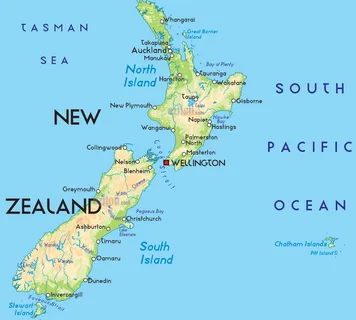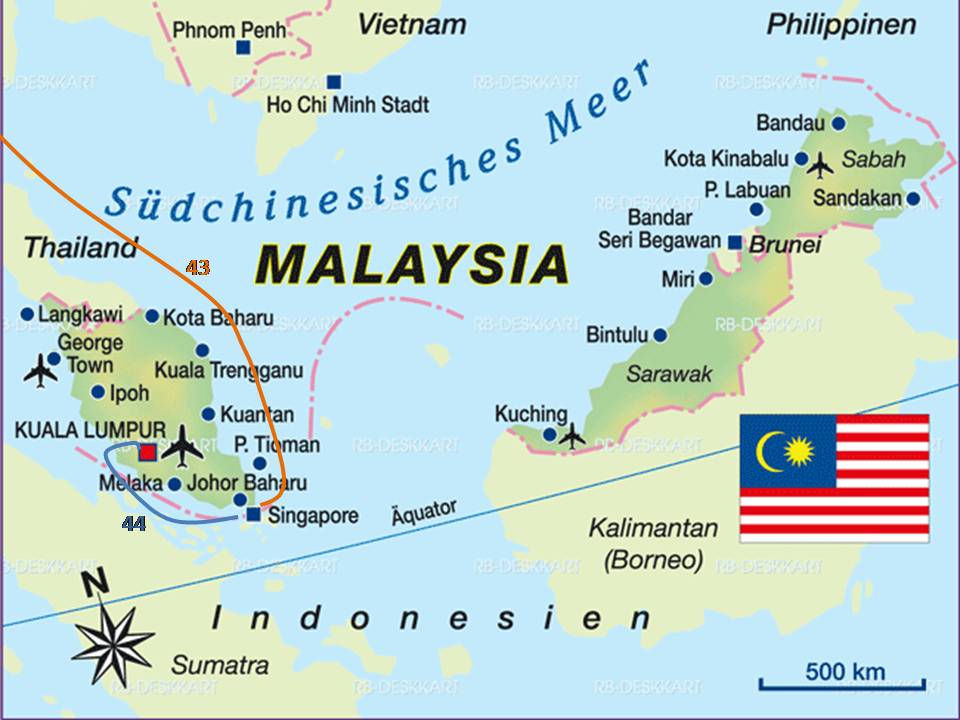Introduction to New Zealand
New Zealand, also known as Aotearoa in the indigenous Maori language, consists of two main islands—North Island and South Island—as well as numerous smaller islands. With a population of approximately 5 million people, New Zealand is renowned for its breathtaking landscapes, outdoor adventures, and vibrant Maori culture. Let’s embark on a journey to discover the maps and facts that define the essence of New Zealand.
Geographical Location
Situated in the southwestern Pacific Ocean, New Zealand lies approximately 1,500 kilometers (900 miles) east of Australia. Its location near the boundary of the Pacific and Indo-Australian tectonic plates contributes to its dynamic geology, characterized by volcanic activity, geothermal hotspots, and rugged coastlines. New Zealand’s diverse ecosystems include forests, mountains, lakes, and fjords, making it a paradise for nature lovers and outdoor enthusiasts.
Political Divisions
New Zealand is divided into 16 regions, each with its own distinct landscapes, communities, and local governments. The capital city, Wellington, is located on the southern tip of the North Island and serves as the political and cultural hub of the country. Other major cities include Auckland, Christchurch, and Dunedin, each offering its own unique charm and attractions.
New Zealand Maps
Maps play a crucial role in understanding New Zealand’s geography, topography, and administrative divisions. Let’s explore some key aspects of New Zealand’s maps and their significance.
Physical Map of New Zealand
A physical map of New Zealand highlights its geographical features, including mountain ranges, rivers, lakes, and coastal plains. The Southern Alps, stretching across the length of the South Island, contain New Zealand’s highest peaks, including Aoraki/Mount Cook. Fiordland National Park, located in the southwest corner of the South Island, is renowned for its stunning fjords, waterfalls, and rugged landscapes.
Political Map of New Zealand
A political map of New Zealand delineates its 16 regions and territorial boundaries, providing an overview of the country’s administrative divisions. This map highlights the capitals of each region, as well as major cities, towns, and transportation networks. Understanding New Zealand’s political geography is essential for navigating its diverse regions and understanding its governance structure.
Cultural Map of New Zealand
A cultural map of New Zealand celebrates the country’s rich Maori heritage, European influences, and multicultural society. From traditional Maori meeting houses and sacred sites to colonial-era architecture and contemporary art galleries, New Zealand’s cultural landscape reflects its diverse history and identity. This map showcases the locations of cultural landmarks, museums, and events that showcase New Zealand’s unique cultural heritage and creative spirit.
Fun and Interesting Facts about New Zealand
New Zealand is replete with fascinating facts and trivia that reflect its natural wonders, cultural diversity, and adventurous spirit. Let’s uncover some fun and interesting facts about this enchanting island nation.
New Zealand is home to some of the world’s most unique wildlife, including the kiwi bird, which is native to the country and serves as its national symbol. Other iconic species found in New Zealand include the kea, a mischievous alpine parrot, and the tuatara, a living fossil and one of the world’s oldest reptiles.
The Maori people, the indigenous Polynesian settlers of New Zealand, have a rich cultural heritage that is deeply intertwined with the land and sea. Traditional Maori customs, such as haka (war dances) and powhiri (welcoming ceremonies), are still practiced today and play a central role in New Zealand’s cultural identity.
New Zealand is known for its adventurous spirit and outdoor pursuits, with activities such as bungee jumping, skydiving, and white-water rafting attracting thrill-seekers from around the world. The country’s diverse landscapes provide the perfect backdrop for adrenaline-fueled adventures, from skiing and snowboarding in the Southern Alps to hiking and kayaking in Abel Tasman National Park.
Frequently Asked Questions (FAQs)
What is the population of New Zealand?
AAs of [latest year], New Zealand has an estimated population of approximately 5 million people, with the majority residing in urban areas such as Auckland, Wellington, and Christchurch.
What are some famous landmarks in New Zealand?
In addition to the Southern Alps and Fiordland National Park, other famous landmarks in New Zealand include Milford Sound, Tongariro National Park (home to the Tongariro Alpine Crossing), Rotorua’s geothermal wonders, and the Waitomo Glowworm Caves.
What is the climate like in New Zealand?
New Zealand has a varied climate, with temperate conditions prevailing in most regions. The North Island tends to be warmer and wetter than the South Island, with subtropical conditions in the far north. The South Island experiences cooler temperatures, especially in the mountainous regions, with snowfall in winter and mild summers.
Conclusion
New Zealand’s maps and facts offer a glimpse into the country’s stunning landscapes, rich cultural heritage, and adventurous spirit. From the snow-capped peaks of the Southern Alps to the crystal-clear waters of its fjords and beaches, New Zealand’s geographical diversity is matched only by its cultural richness and natural beauty. Whether exploring its Maori heritage, embarking on outdoor adventures, or simply enjoying the hospitality of its people, New Zealand offers endless opportunities for discovery and exploration.
- Maps Of Tennessee - May 9, 2024
- Maps Of Morocco - May 8, 2024
- Maps Of Germany - May 7, 2024




